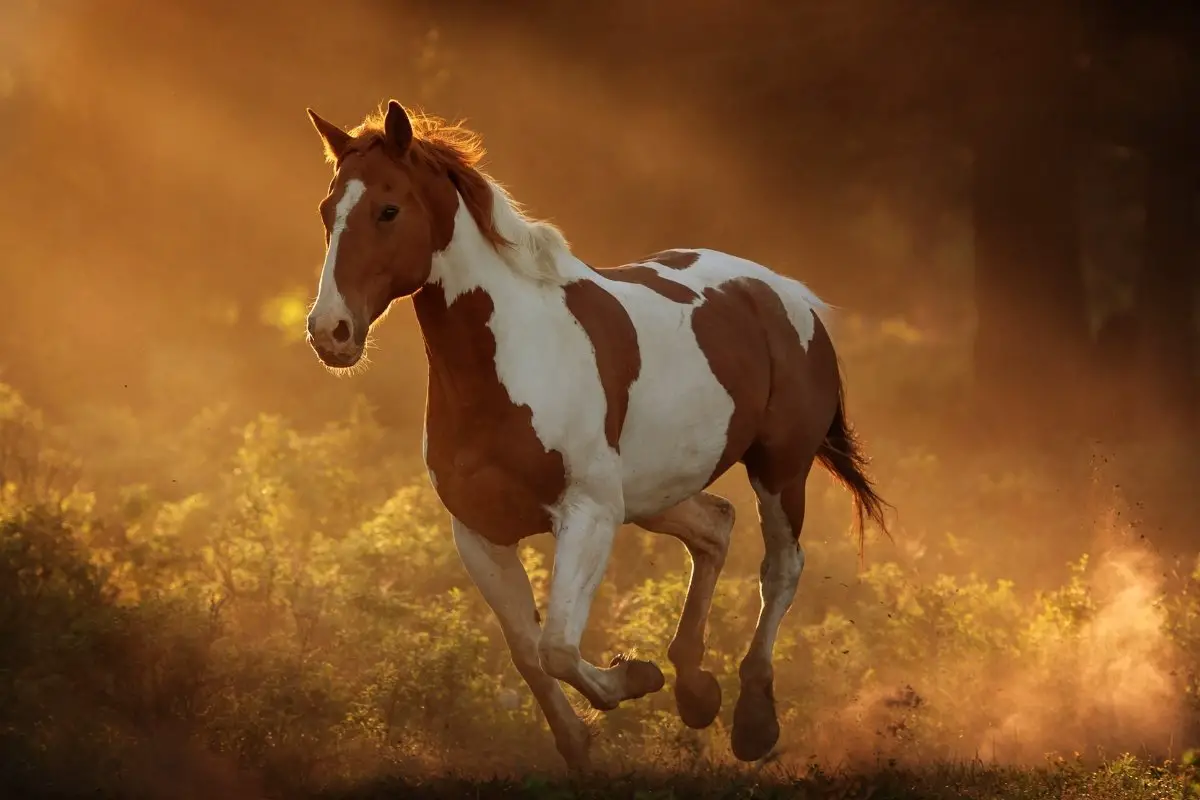Last Updated on January 26, 2022
There are many different Paint horse colors and patterns, and these stunning horses are loved all around the world for their striking features and calm temperament. The different names for Paint horse coat markings and colors can be very confusing, so let’s find out all about them!
What Is A Paint Horse?
The Paint horse, officially known as the American Paint Horse, is a breed of horse that originates from North America. This breed is actually an offshoot from the American Quarter Horse, and the two breeds share many features. However, there is one big difference, and that is the color of the Paint horse!

In 1940, the American Quarter Horse Association was formed, and they excluded all horses with too much white coloring from the breed registry. However, Quarter horses with this coloring were widespread and still popular, so a separate registry was formed. This was called the American Paint Horse Association.
Check Out Types Of Roan Horses And Colors Explained
What Are The Different Types Of Paint Horses?
Paint horses, like Quarter horses, have been influenced by different bloodlines through the decades. The main one of these is the Thoroughbred, and you will find some Paints that have these qualities. Other Paint horses are more typical of their ranching ancestors and are rugged and sturdy mounts.
One thing that most Paint horses have in common is their amenable nature. This is a gentle and kind breed, easy to train and quick to learn. Fans of the Paint horse love their reliable temperament and ability to stay out of trouble!
Legends: Outstanding Quarter Horse Stallions and Mares
Read more about What Does A Horse Symbolize?
Why Do You Get Different Paint Horse Colors And Patterns?
Most Paint horses have markings that are described as colored. This means that they have two or more colors – normally a dark or solid shade, with patches of white. However, it is also possible to get Paint horses that have a solid coat color, with no white markings or spots at all.
The many variations on horse coat colors all come down to their genetics. Each horse will receive a pair of each set of genes, one from each parent. This defines what the horse will look like, as well as many other characteristics.
Every horse will get either a red or black gene from each parent – this establishes the base coat color. However, there are other genes that can affect the coloring of the horse. Paint horses have a very high likelihood of inheriting the patch white spotting pattern gene, which is responsible for the areas of white coat as well as spotted markings.
Paint horses can also carry other genes that will affect the coat color. For example, they may inherit the cream gene – this is a dilution gene that lightens the coat color. It is the combination of all these genetic influences that create the myriad of coat colors and patterns in Paint horses.
Click here to Learn Do Horses Have Knee Caps? Horse Limbs Explained!
Summary
So, as we have learned, there are many different variations of Paint horse colors and patterns. This remarkable breed of horse can be any of the standard horse colorings, normally with large patches of white hair. It is also common for Paint horses to have spots and other unusual markings.
We’d love to hear your thoughts on Paint horse colors and patterns! Have you ever owned a horse with an unusual coat color? Or maybe you’d like to try breeding a horse with a specific set of markings? Leave a comment below and we’ll get back to you!

Kate Chalmers is a qualified veterinary nurse who has specialized in horse care for the vast majority of her career. She has been around horses since she was a child, starting out riding ponies and helping out at the local stables before going on to college to study Horse Care & Management. She has backed and trained many horses during her lifetime and competed in various equestrian sports at different levels.
After Kate qualified as a veterinary nurse, she provided nursing care to the patients of a large equine veterinary hospital for many years. She then went on to teach horse care and veterinary nursing at one of the top colleges in the country. This has led to an in-depth knowledge of the care needs of horses and their various medical ailments, as well as a life-long passion for educating horse owners on how to provide the best possible care for their four-legged friends.
Kate Chalmers BSc (Hons) CVN, Dip AVN (Equine) Dip HE CVN EVN VN A1 PGCE


